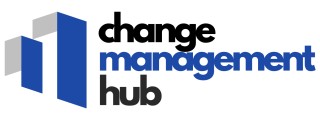
Understanding the Role of Document Management in Change Management
Document Management: Essential for Effective Change
In the modern business landscape, the capacity to adapt is paramount, and effective change management plays a critical role. At the heart of this process lies the pivotal task of document management. A well-structured document management system (DMS) is not just a repository of information but an integral part of change initiatives, driving both efficiency and compliance within enterprises.
The importance of a robust enterprise document management system cannot be overstated. As enterprises grow, so do their document volumes and complexity. Managing these vast resources demands software solutions that ensure seamless document control and easy accessibility. This is where services such as cloud-based platforms and electronic document systems come into play, offering flexible and adaptable solutions for dynamic business needs.
The Critical Role of Document Management Systems
Effective document management supports change management by providing a stable framework where data is not only securely stored but also readily accessible. This includes the deployment of sophisticated content management tools that assist with version control and real-time access, facilitating more agile organizational responses to change.
Furthermore, advanced document management systems enable electronic document exchange across departments, fostering collaboration and streamlining processes. These systems offer unique features pertinent to change management, including automation of document-related tasks, improved records management, and enhanced access control, thus ensuring that the right people have access to the right information at the right time.
For more insights into the core aspects of mastering change management, you can explore essential strategies and principles that can further harmonize document management with change initiatives.
Key Challenges in Implementing Document Management Systems
Overcoming Obstacles in System Implementation
Implementing an effective document management system (DMS) can be a significant challenge for enterprises. The key issues often revolve around ensuring the system integrates seamlessly with existing business processes and technologies. Organizations face hurdles such as resistance to change, compliance concerns, and data migration difficulties, which can complicate the implementation process.
Resistance and Adaptation
Resistance to new systems is a natural response from team members accustomed to existing methods. Educating employees on the value of DMS—highlighting its efficacy in organizing electronic documents and automating document control—can foster adaptation. Including employees in the development of new processes and features enhances user acceptance and mitigates concerns.
Compliance and Data Migration Challenges
Compliance is another prominent concern. Enterprises must ensure that the DMS aligns with industry regulations and corporate policies. Moreover, the integrity of records management and version control is crucial in maintaining accountability. Migration from legacy systems to modern, cloud-based management solutions involves comprehensive data transfer, which can be time-consuming and complex.
Integration and Accessibility
Successful integration means ensuring the DMS is compatible with existing enterprise content management platforms. This interoperability is essential for real-time access to documents and the effective utilization of data analytics. Access control mechanisms should be robust yet flexible, allowing employee access to necessary documents stored within the system while protecting sensitive information.
For further insights into the opportunities and challenges associated with careers in change management, you can explore this detailed resource.
Strategies for Effective Document Management During Organizational Change
Enhancing Document Management Amidst Change
Facilitating effective document management during organizational change is crucial. Achieving this requires understanding how to integrate enterprise document management systems with broader transformation strategies. Here are key strategies to optimize document management in such dynamic environments:- Real-Time Document Access: To ensure smooth transition, stakeholders must have real-time access to all necessary documents. Cloud-based document management solutions can provide this capability, allowing employees to seamlessly retrieve and update documents, regardless of their location. This improved accessibility reduces downtime and enhances employee productivity.
- Compliance and Control: During periods of change, regulatory compliance is paramount. Implementing comprehensive document controls and compliance measures within the document management system helps enterprises mitigate risks. Access control features ensure only authorized individuals can access sensitive data, maintaining integrity and security.
- Streamlined Processes: Transform processes by leveraging workflow automation features within the enterprise document management systems. Automating repetitive tasks not only increases efficiency but also ensures consistency across document-related processes. This results in faster approval cycles and reduces the likelihood of human error.
- Version Control and Records Management: Maintaining accurate records is vital during change. A robust electronic document management (EDM) system with effective version control guarantees that team members work with the most current documents. This practice avoids confusion and ensures data consistency across the organization.
- Content Management Integration: Integrate your document management software with broader enterprise content management platforms. Such integration fosters a holistic view of content across the business. It ensures documents are relevant and aligned with enterprise goals.
Technology's Impact on Document Management and Change Management
The Influence of Technology in Document Management and Change Management
In today's rapidly evolving digital landscape, technology plays a pivotal role in shaping document and change management practices. With the advent of sophisticated document management systems (DMS), enterprises are better equipped to handle vast amounts of electronic documents efficiently. These systems facilitate seamless document control, improving the way businesses manage their content, ensuring records management, and enhancing compliance.
An effective document management system is vital for the smooth execution of organizational changes. Technologies such as cloud-based solutions and enterprise content management platforms offer real-time access and control over documents. This ensures that the whole management process becomes more efficient, and stakeholders have access to essential data whenever needed. Additionally, the availability of these documents stored in digital form aids in supporting the business goals during transitions.
The implementation of management software equipped with features like version control and access control profoundly impacts how companies handle changes. These tools provide a structured way to maintain up-to-date records, significantly reducing the risk of outdated information leading to compliance issues. Enhanced electronic document management (EDM) capabilities help organizations maintain governance over their digital assets, thus enabling a more effective change management strategy.
Furthermore, as enterprises embrace digital transformation, the integration of advanced management solutions helps in optimizing their business processes. Systems that allow for seamless integration of document and change management bring about a synergy that ensures minimal disruption during transitions. By leveraging these technological advancements, organizations can effectively align their resources with their strategic objectives.
In this era of rapid technological advancement, the ability to quickly adapt and incorporate innovative solutions into existing business practices is essential. Effective change management, supported by robust document management systems, ensures that enterprises remain competitive and resilient in the face of change.













